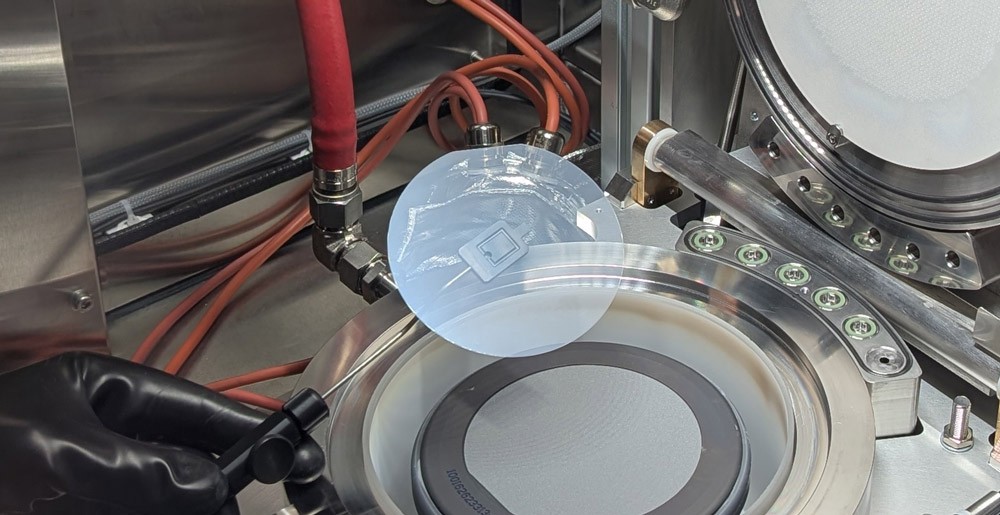
【World Express】The Centre for Integrated Semiconductor Materials (CISM) at Swansea University establish the first capability in the UK for growing gallium oxide thin films
日期:2025-04-17阅读:726
The Centre for Integrated Semiconductor Materials (CISM) at Swansea University in South Wales has used a newly commissioned AIXTRON close-coupled showerhead (CCS) deposition system to establish the first capability in the UK for growing gallium oxide (Ga2O3) thin films on 4-inch substrates, which have been tested and shown to be very uniform and of extremely high quality, it is claimed.

Picture: The AIXTRON close-coupled showerhead in the oxide and chalcogenide MOCVD reactor, with the 4-inch gallium oxide thin film on sapphire being unloaded. (Photo courtesy of Swansea University).
The new deposition system was funded by a £2.7m grant from the Engineering and Physical Sciences Research Council (EPSRC – Strategic Equipment Programme).
This capability is housed in the new Oxide and Chalcogenide Metalorganic Chemical Vapor Deposition (MOCVD) Laboratory at CISM, which is now set to become a national hub for thin-film gallium oxide R&D in areas such as power electronics, deep-UV photodetectors and transparent conductive oxide (TCO) applications.
“This new facility represents a major step forward for our research, and I’m incredibly excited about the possibilities it unlocks for novel materials and device development,” says Dr Dan Lamb, research lead at the Oxide and Chalcogenide MOCVD Centre at Swansea University. “With this advanced equipment, we can push the boundaries of our existing work while also creating new opportunities for collaboration with research groups across the UK and beyond,” he adds.
“Swansea University’s MOCVD capability is now accessible to researchers through direct collaboration,” notes professor John Heffernan of the National Epitaxy Facility, which supports semiconductor research in UK universities. “Researchers can also gain access to feasibility studies through Swansea partnering with the UK National Epitaxy Facility’s Pump Priming scheme. This initiative ensures that academic and industrial partners can leverage Swansea’s expertise in epitaxial thin-film growth to accelerate their research and technology development.”
“This is a major step forward for wide-bandgap materials innovation in our South Wales Semiconductor Cluster, underpinning efforts to grow regional manufacturing in advanced power electronics such as Vishay’s recently announced £250m investment in SiC [silicon carbide] component expansion,” says Sam Evans, director of quality assurance and external affairs at Vishay Newport.


